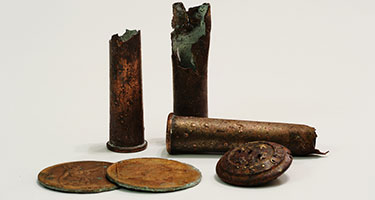The Cannock Camps Today
The ghostly villages that came and went in the four turbulent years of World War 1.
In the autumn of 1914, construction of two large camps, known as Brocton Camp and Rugeley Camp, began on Cannock Chase. When completed they could hold up to 40,000 men at one time and probably trained upwards of 500,000, including men of the New Zealand Rifle Brigade, who later made Cannock Chase their UK headquarters.
Cannock Chase still has extensive archaeological remains of both camps, including hut bases, former roads and railways that survive fossilised within the existing footpath network or as earthwork features.
Excavations of camp rubbish dumps revealed how everyday life was lived on the Chase: from broken military issue crockery, beer and pop bottles and boot polish containers, to spent drill rounds, examples of which can be seen on display at Marquis Drive Visitor Centre and at The Museum of Cannock Chase.
After the War the camps became ghost towns with the rows of huts standing empty. They were later dismantled and many were sold to locals who used them as workshops, houses and even a village parish hall.
In 2006 the Friends of Cannock Chase re-erected a hut on the Chase, next to Cannock Chase Visitor Centre. Much of the original hut has been preserved, with the interior fitted out as it would have looked in c.1916. The hut that became the Cannock Chase Great War Camps Interpretation Centre spent 85 years of its life as a parish hall in the village of Gayton hosting whist drives, dances, wedding receptions and local meetings.
Also on Cannock Chase are the remains a scaled terrain model of a section of the Western Front, thought to be the only surviving example of a Great War terrain model representing the Belgian village and environs of Messines. The model served as a teaching aid but also as a memorial to one of the most successful offensives of the Great War.
‘Inside Out’ clip courtesy of The Chase Project.




